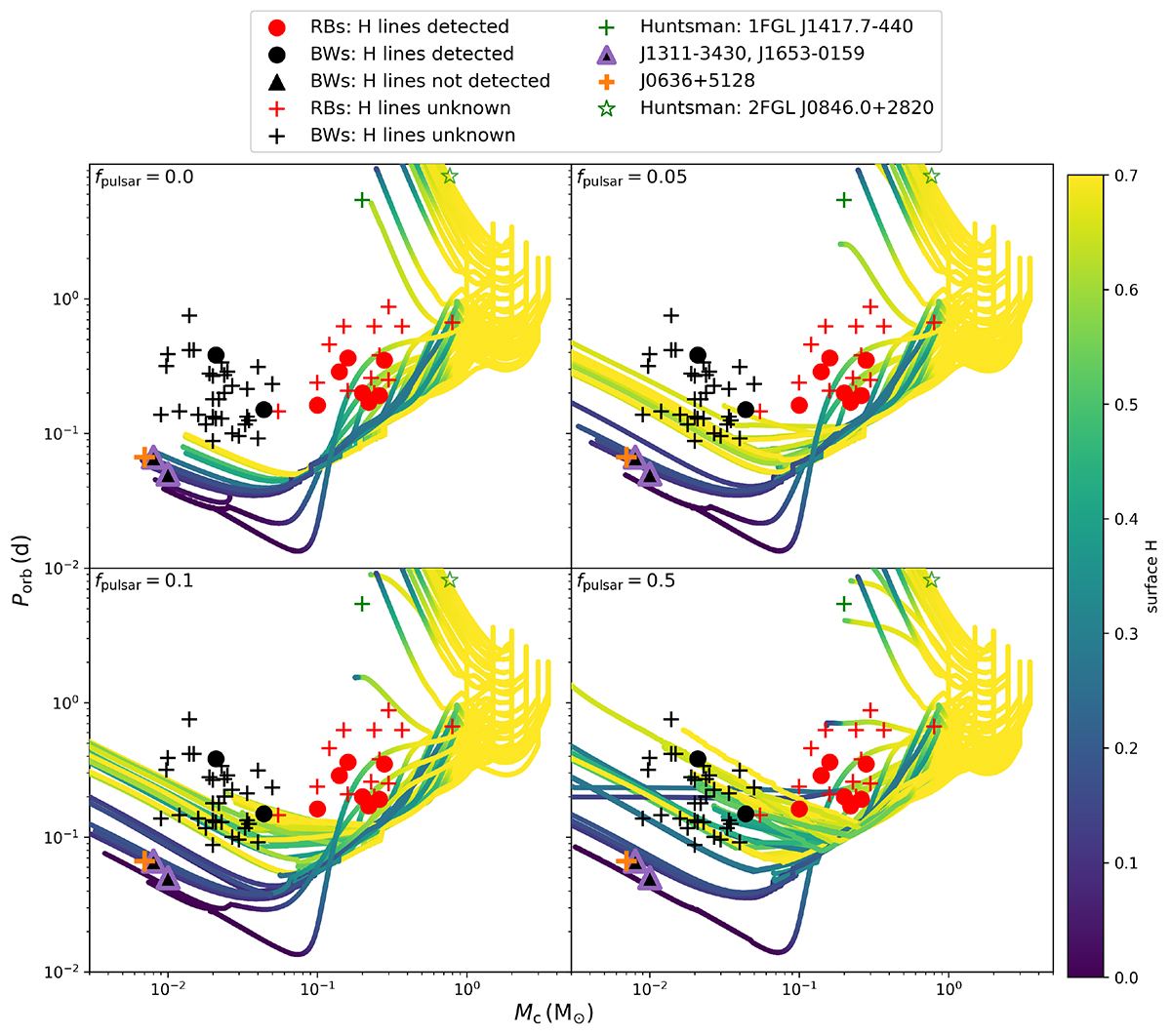Fig. 1.

Download original image
Orbital period evolution versus companion mass of the simulated binaries for β = 0.3 with an initial NS of mass 1.3 M⊙ and fpulsar values of 0.0 (top left), 0.05 (top right), 0.1 (bottom left), and 0.5 (bottom right). The term Mc is the mass of the companion to the NS, and Porb is the orbital period. The color bar shows the changing surface abundance of the companion. We also compare our tracks to estimated Mc, min and observed Porb for BWs (black crosses) and RBs (red crosses), and huntsmen spiders (green crosses), including whether H-lines have been detected (filled circles) or not (filled triangles) or if it is unknown (crosses), from Nedreaas (2024, and references therein). The green star is the huntsman candidate 2FGL J0846.0+2820, observed by Fermi-LAT (Swihart et al. 2017) (surface H is unknown). The three tidarrens (J1311–3430, J1653–0159, and J0636+5128) are also shown. The initial binaries have a MS star (range of 1.0 to 4.5 M⊙) and initial periods of 0.6 to 4.0 d.
Current usage metrics show cumulative count of Article Views (full-text article views including HTML views, PDF and ePub downloads, according to the available data) and Abstracts Views on Vision4Press platform.
Data correspond to usage on the plateform after 2015. The current usage metrics is available 48-96 hours after online publication and is updated daily on week days.
Initial download of the metrics may take a while.


